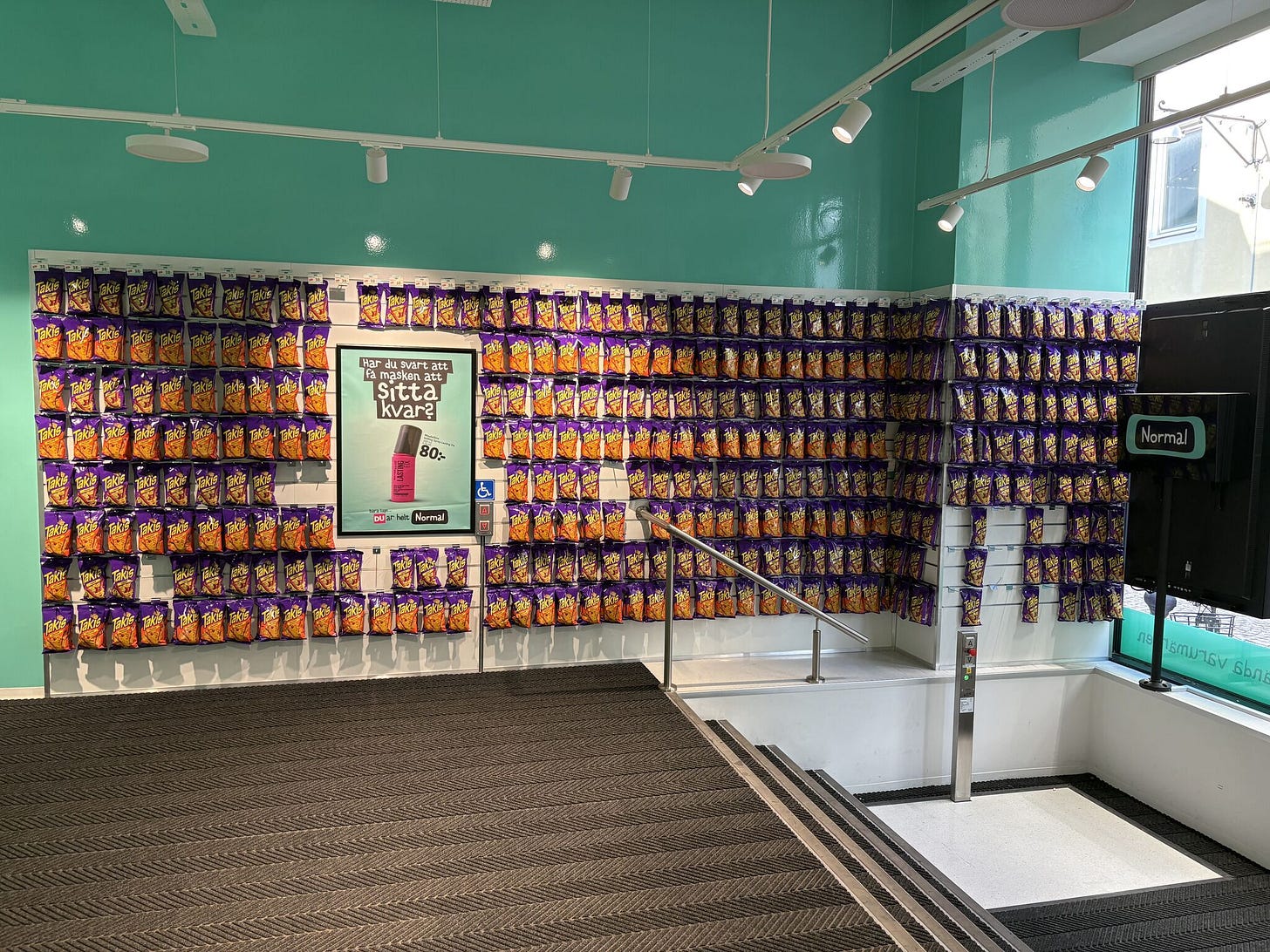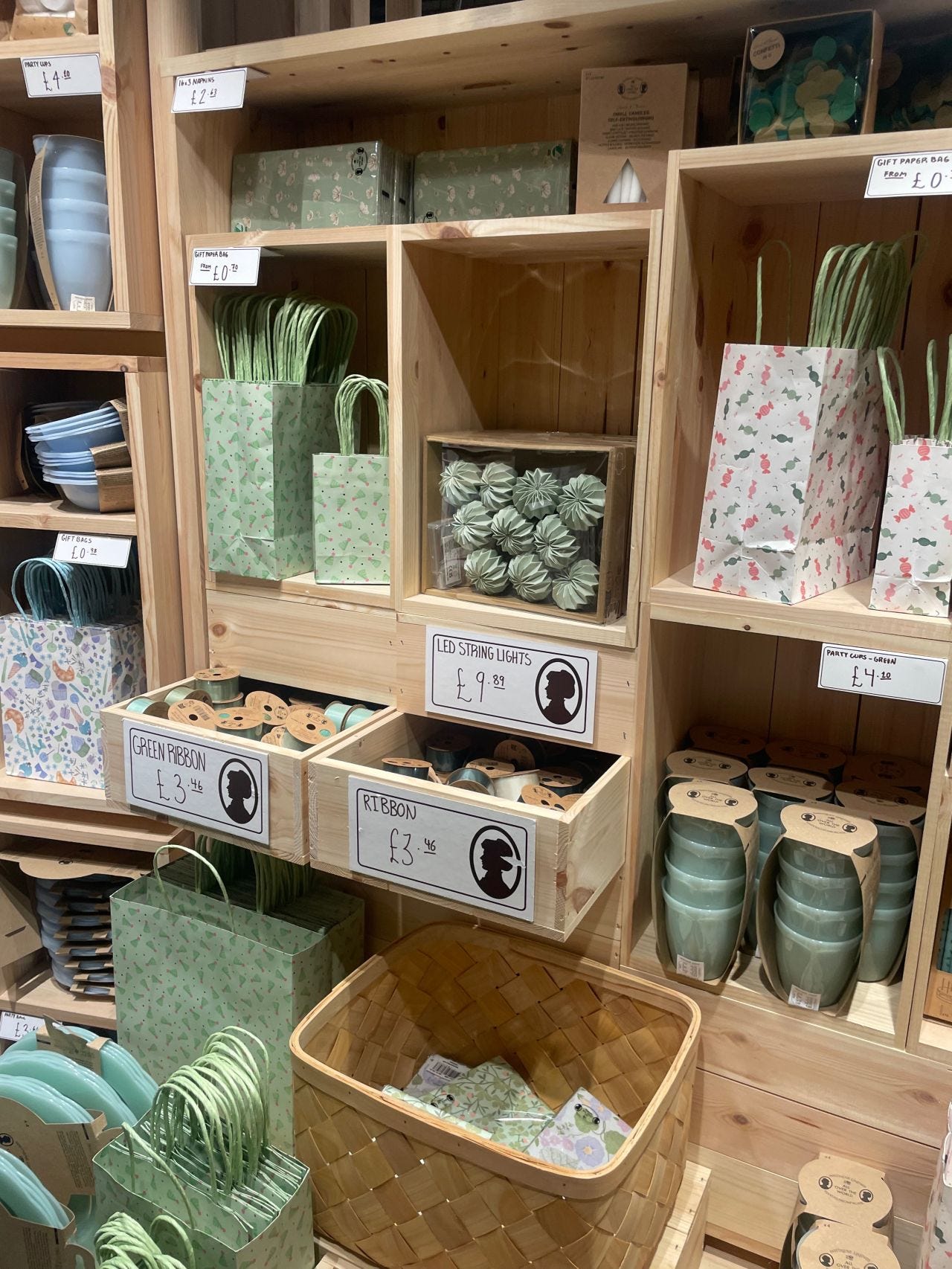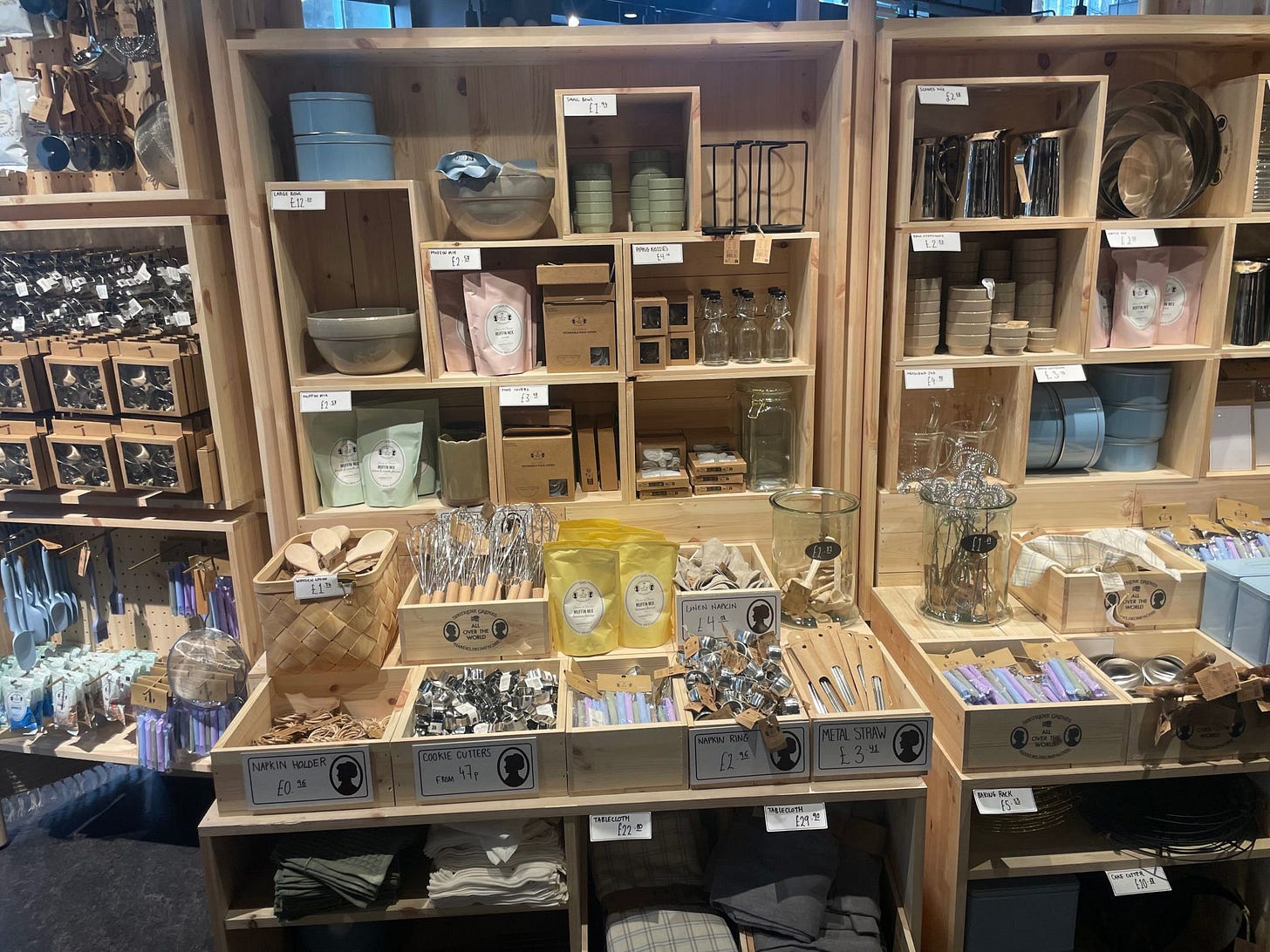Normal, Søstrene Grene and the strange appeal of “prison stores”
Welcome to the prison store - a format that makes little sense in the context of modern life, and yet continues to be wildly successful.
I’ve started calling them “prison stores”, for fun.
They’ve been around for a long time, and as is the case with so much that has become normalised in the retail ether, it all started with IKEA.
The most notable and familiar examples include Normal, Søstrene Grene, Ale Hop and Flying Tiger.
The principle is well established. You go inside, and there’s only one path through the store. And at some point you realise you can’t leave. You’re trapped. There is one way in, and one way out.
And because of their enduring success, that path out isn’t straightforward. It’s narrow and it’s full of customers feverishly filling their baskets with the most extraordinary mix of items.
Here’s one with a multipack of Takis, a scented candle, a USB cable and some tissues. Here’s another with some toothpaste, a fidget toy and an energy drink.
No basket is the same, and no one leaves empty-handed.
Meanwhile, the uninitiated fear they might never leave at all. Perhaps they imagine how long they might survive here (answer: yes there is some food but it’s the kind that, if eaten exclusively, would lead to scurvy in weeks).
Welcome to the prison store - a format that makes little sense in the context of modern life, and yet continues to be wildly successful.
What the fuck is going on?
More than cheap stuff
You’d struggle to find any emerging store-focused retailers growing faster or more remarkably than Normal and Søstrene Grene.
Normal launched its first store in 2013 and now has more than 850 across Europe. The Danish business is booming in Northern Europe, but like a king using a sword that costs 50p, has started to conquer France and Spain too. More regions are in its crosshairs.
Meanwhile, Søstrene Grene, another Danish proponent of this format, now has more than 330 stores across Europe and is arguably the UK’s fastest expanding store-focused retailer.
Now, it’s only fair to draw a distinction here. Søstrene Grene and Normal are different. Normal’s merchandising is chaotic and the look and feel is comparable to a Superdrug or Walgreens after a burglary. Søstrene Grene’s merchandising is immaculate and precise - with smells of pine and sounds of classical music to enhance the mood.
However, the fundamental experience is exactly the same. Lots of remarkably cheap products, no clear pattern to where the products are, and the sense that you’re in a maze.
They are prisons - but of course, some prisons are much nicer than others.
The instinctive explanation for the enduring and reinvigorated success of this format is cost. One cost of living crisis after another has made life feel tough for consumers, and stores that offer surprisingly low prices have a fresh relevance.
But this explanation doesn’t make sense on closer inspection. These kinds of products are readily available online - and look hard enough, and you’ll probably find them even cheaper.
Furthermore, much like rats, you’re never more than a few metres away from a big discount store like B&M or Dollar Store. And these stores, along with the cheaper end of the supermarket sector, are packed with the cheapest products from every conceivable sector.
We can all agree that there is no shortage of places to buy cheap stuff.
The renewed relevance of this format points to something else. And I think that something else is experience.
It’s experience, but not as we know it
When we think of experiential retail we tend to think of secret VIP rooms in a luxury store, in-store cafes with bespoke menus, treatment rooms, styling services, slides, ballpits, cocktail making… you get the idea.
In reality, this stuff is peripheral. Burberry taking over a boutique hotel or Gentle Monster launching their latest mind-blowing in-store installations feels significant, but goes totally unnoticed by the majority of people.
The majority of people aren’t experiencing these things. But they may well be experiencing Normal and Søstrene Grene - despite the fact they live in a world that doesn’t need them. A culture that offers a tidal wave of cheap products anywhere and everywhere they look.
The truth is, whether we like it or not, that Normal, Søstrene Grene and others are offering an experience that has found relevance and meaning in our saturated world. And that experience is probably much more deserving of our attention given the scale and accessibility of its appeal.
So what are the defining elements of this experience? Because clearly, one man’s prison is another man’s paradise.
Unpredictable stores for unpredictable shoppers
I think that what’s happening here is an accessible hit of unpredictability.
Online has mastered predictability. We all know that. After all, it knows us - or at least, what we look at and buy online.
What it hasn’t mastered is unpredictability - and that matters. It matters because we are unpredictable - Freud figured that out in the 19th Century. We are irrational.
And so, too, are these stores. It’s irrational to spend 20 minutes in Normal, largely buying things you hadn’t planned to. But evidently, it’s happening - and customers are enjoying that experience.
It’s inefficient (self-checkout or online stock visibility is not part of the plan). But their success is telling us something about shoppers - and potentially the future of shopping.
It’s telling us that customers want experiences - but that those experiences aren’t necessarily big, shiny concepts.
And it’s reminding us that customers are complicated, unpredictable - and will continue to rebel against behavioural norms and expectations in small, unpredictable ways.
That means the future belongs not just to the giants who dominate everything that can be predicted and rationalised, but also to the brands that pay attention to how weird we all are.
And on that note, I’m off to Søstrene Grene with the intention of buying wrapping paper, but the very real prospect of buying another candle I’ll never use.







